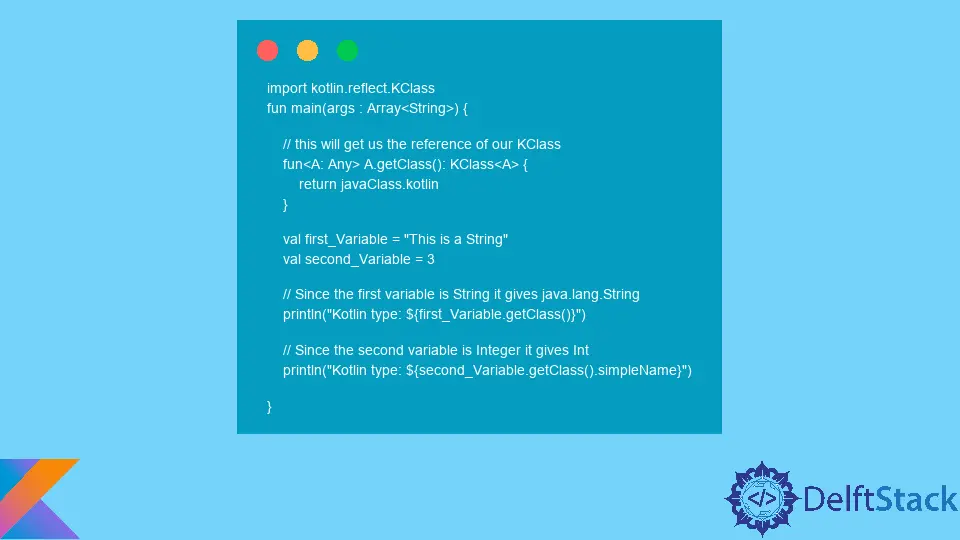Equivalent of getClass() for KClass
- Understanding KClass in Kotlin
- Using ::class to Retrieve KClass Reference
- Using KClass Reference with Instance
- Retrieving KClass from Java Class
- Conclusion
- FAQ

Kotlin is a modern programming language that has gained immense popularity among developers for its simplicity and expressiveness. One feature that developers often rely on is the ability to retrieve class information dynamically. In Java, this is done using the getClass() method, while in Kotlin, you can achieve similar functionality using .javaClass(). However, when you are working with Kotlin’s KClass, you may wonder how to retrieve a reference to it in an equivalent manner.
In this article, we will explore various methods to obtain a KClass reference in Kotlin, providing practical examples and clear explanations to help you understand the process better.
Understanding KClass in Kotlin
Before diving into the methods of obtaining a KClass reference, it’s essential to understand what KClass is. In Kotlin, KClass is part of the Kotlin reflection library, which allows you to work with class metadata at runtime. Unlike Java’s reflection, Kotlin’s reflection is more type-safe and provides a more idiomatic way to interact with classes.
In Kotlin, every class has a corresponding KClass object, which can be accessed using the ::class syntax. This is similar to how Java uses the .class syntax for class references. Understanding how to navigate between these references is crucial for effective Kotlin programming.
Using ::class to Retrieve KClass Reference
The most straightforward way to obtain a KClass reference in Kotlin is by using the ::class syntax. This method is not only simple but also type-safe, making it a preferred choice for many developers.
Here’s a quick example of how to use ::class to get a KClass reference:
data class Person(val name: String, val age: Int)
fun main() {
val personKClass = Person::class
println(personKClass)
}
Output:
class Person
In this example, we define a simple data class Person. By using Person::class, we obtain a reference to the KClass of the Person class. This reference can then be used to inspect the class’s properties, functions, and other metadata. This method is particularly useful when you want to perform reflection-based operations, such as serialization or dynamic class loading.
Using KClass Reference with Instance
Another effective way to retrieve the KClass reference is by using an instance of the class. This method is particularly useful when you already have an object and want to retrieve its class reference without explicitly specifying the class type.
Here’s how you can do this:
data class Car(val model: String, val year: Int)
fun main() {
val myCar = Car("Toyota", 2020)
val carKClass = myCar::class
println(carKClass)
}
Output:
class Car
In this snippet, we create an instance of the Car class. By using myCar::class, we can access the KClass reference for the Car class. This method is particularly handy when dealing with polymorphism or when you want to retrieve class information dynamically based on the instance type.
Retrieving KClass from Java Class
If you are working in a mixed environment where Kotlin and Java coexist, you might find yourself needing to convert a Java class reference into a KClass. Fortunately, Kotlin provides a convenient way to achieve this using the KClass extension function.
Here’s an example:
class Animal
fun main() {
val animalKClass = Animal::class.java.kotlin
println(animalKClass)
}
Output:
class Animal
In this example, we first access the Java class reference using Animal::class.java. Then, we convert it to a KClass reference by appending .kotlin. This method is especially useful when you need to leverage Kotlin’s reflection capabilities on classes that were originally defined in Java.
Conclusion
In summary, retrieving a KClass reference in Kotlin can be done using various methods, such as the ::class syntax, accessing it through an instance, or converting a Java class reference. Each method has its own use cases and advantages, allowing you to choose the most appropriate one based on your specific needs. Understanding how to work with KClass is essential for leveraging Kotlin’s powerful reflection capabilities, enabling you to write more dynamic and flexible code.
FAQ
- What is KClass in Kotlin?
KClass is a representation of a class in Kotlin, allowing you to access class metadata at runtime.
-
How do I get a KClass reference from an instance?
You can retrieve a KClass reference from an instance using the syntaxinstance::class. -
Can I convert a Java class to KClass?
Yes, you can convert a Java class reference to KClass using the.kotlinproperty. -
Is using KClass safe?
Yes, KClass provides a type-safe way to work with class metadata compared to traditional Java reflection. -
What are common use cases for KClass?
Common use cases include serialization, dependency injection, and dynamic class loading.
Kailash Vaviya is a freelance writer who started writing in 2019 and has never stopped since then as he fell in love with it. He has a soft corner for technology and likes to read, learn, and write about it. His content is focused on providing information to help build a brand presence and gain engagement.
LinkedIn